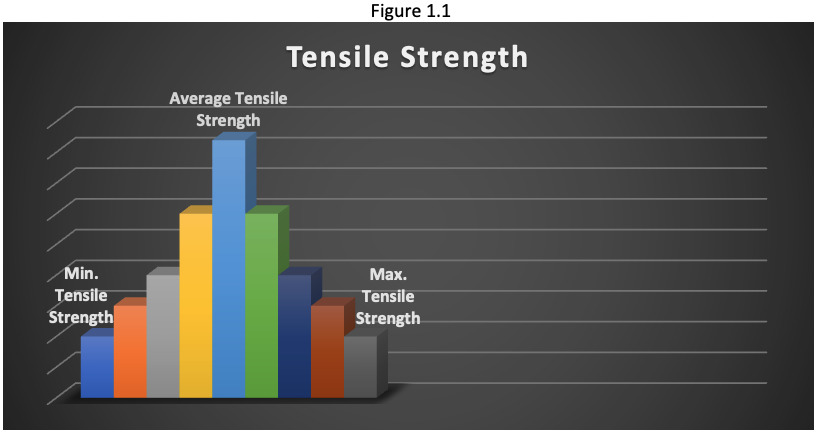Roller Chain Strength
![]()
When it comes down to engineering an application, the strength of a roller chain is an essential factor when determining the correct size to use. However, there are several important terms when referring to how strong a roller chain is, and it is imperative to distinguish the two.
Roller Chain Strength Explained PDF Download - ![]() Roller Chain Strength Terms:
Roller Chain Strength Terms:- Tensile Strength
- Working Load
Roller Chain Tensile Strength
![]()
Tensile strength is defined by the amount of force required for a chain to fail. However, three different sub-terms/ measurements are taken when testing for tensile strength. The below chart shows a visual figure of the three different benchmark measurements.
- Minimum Tensile Strength – This is the lowest amount of force taken to break a given chain out of a series of tensile tests conducted on a particular size of roller chain; there are typically multiple amounts of tests done per run on each size to ensure this measurement is applicable.
- Average Tensile Strength – This is the median amount of force taken to break a given chain out of a series of tensile tests conducted on a particular size of roller chain.
- Maximum Tensile Strength – This is the highest amount of force taken to break a given chain out of a series of tensile tests conducted on a particular size of roller chain.
Roller Chain Working Load
The definition of a roller chain working load is the amount of linear pull exerted on a chain by a drive. This load measurement is calculated using different formulas and with a safety factor of 70% of the tensile strength. Since a working load is what the specific chain size is designed to operate under through a range of applications, it is imperative to use this load rating when creating a drive.
Working Load/ Chain Pull Equations:![]()
Roller Chain Elongation Chart
- Points O – A: Elastic region
- Point A: Limit of proportionality for chains; there is not an obvious declining point, as in mild steel
- Points A – C: Plastic deformation
- Point B: Maximum tension point
- Point C: Actual breakage
![]()
The above elongation chart visualizes how a roller chain strength is mapped. Point B is the maximum tension point, which is the maximum tensile strength. In some circumstances, point B will happen simultaneously with point C. After several chain breakings, a tensile strength graph can be formed to show normal distribution (figure 1.1).
Something important to note about tensile strengths is that most manufacturers, from a marketing standpoint, will showcase their maximum tensile strength; here at DUROCHAIN, we only publish our minimum breaking load (min. tensile strength).




